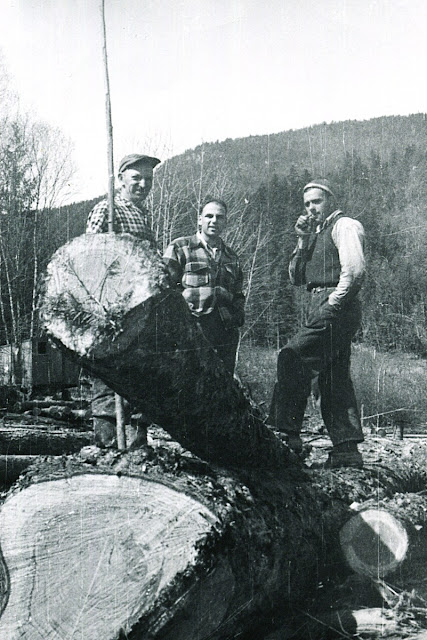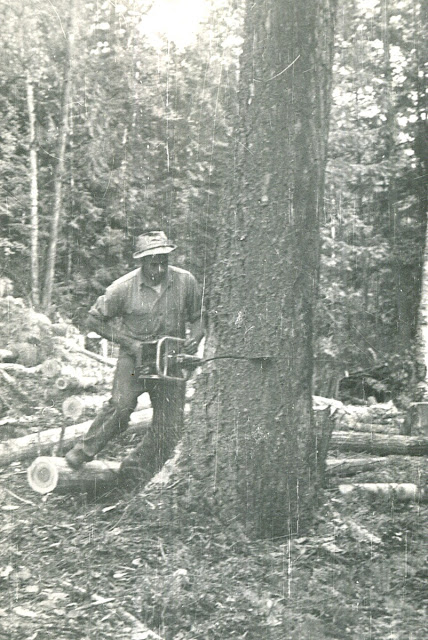If you talk to animals they will talk with you
and you will know each other.
If you do not talk to them you will not know them,
and what you do not know you will fear.
What one fears one destroys.
Chief Dan George
Edmond and "kuddly"
Edmond hunted when he first arrived on the Ferme Fleurdelys as portrayed in the above photos. There was a definite moment however when he stopped hunting completely and the farm became a refuge for animals and was actively protected from hunters. It is unclear to me due to the passage of time but the story somehow involved the shooting of a deer which would become his last kill. In his later years his mission to extinguish pesky coyotes became actually comical in nature as he would drive around with the gun in the truck as a mute warning.
Most of the animals of the farm did need to be killed at some point and that has always been a burden. There is no way to reconcile the sacrifice of one life for another. It rests uneasy on the soul. My preference has always been "on site" slaughter and that is how the Ferme Fleurdelys operated for many years out of necessity due to the lack of a slaughter facility. It is extremely difficult to put to rest a friend which the farmers discovered when it came time to slaughter animals like "Pig-Pig".
The modern slaughter house, although thankfully removing the farmer from the task, also places a lot of stress on the animals due to transportation and then the "process" within the facility itself.
and you will know each other.
If you do not talk to them you will not know them,
and what you do not know you will fear.
What one fears one destroys.
Chief Dan George
Edmond and "kuddly"
Edmond hunted when he first arrived on the Ferme Fleurdelys as portrayed in the above photos. There was a definite moment however when he stopped hunting completely and the farm became a refuge for animals and was actively protected from hunters. It is unclear to me due to the passage of time but the story somehow involved the shooting of a deer which would become his last kill. In his later years his mission to extinguish pesky coyotes became actually comical in nature as he would drive around with the gun in the truck as a mute warning.
Most of the animals of the farm did need to be killed at some point and that has always been a burden. There is no way to reconcile the sacrifice of one life for another. It rests uneasy on the soul. My preference has always been "on site" slaughter and that is how the Ferme Fleurdelys operated for many years out of necessity due to the lack of a slaughter facility. It is extremely difficult to put to rest a friend which the farmers discovered when it came time to slaughter animals like "Pig-Pig".
The modern slaughter house, although thankfully removing the farmer from the task, also places a lot of stress on the animals due to transportation and then the "process" within the facility itself.









 Edmond and Augustin - the bulldozer doing field work.
Edmond and Augustin - the bulldozer doing field work.































